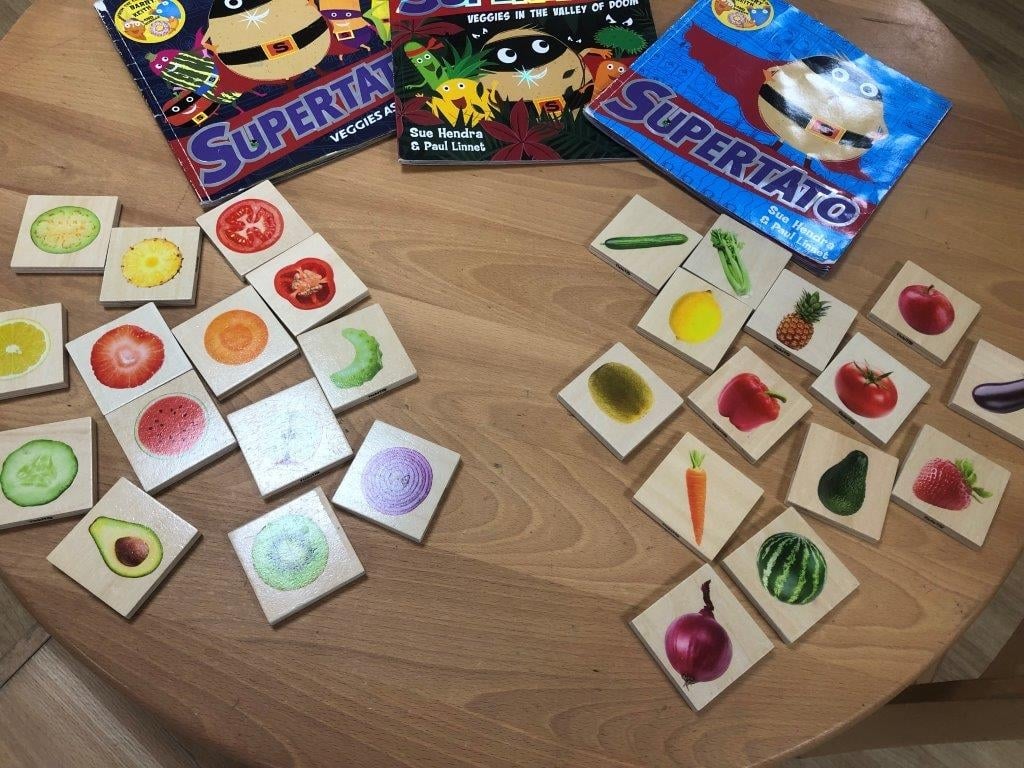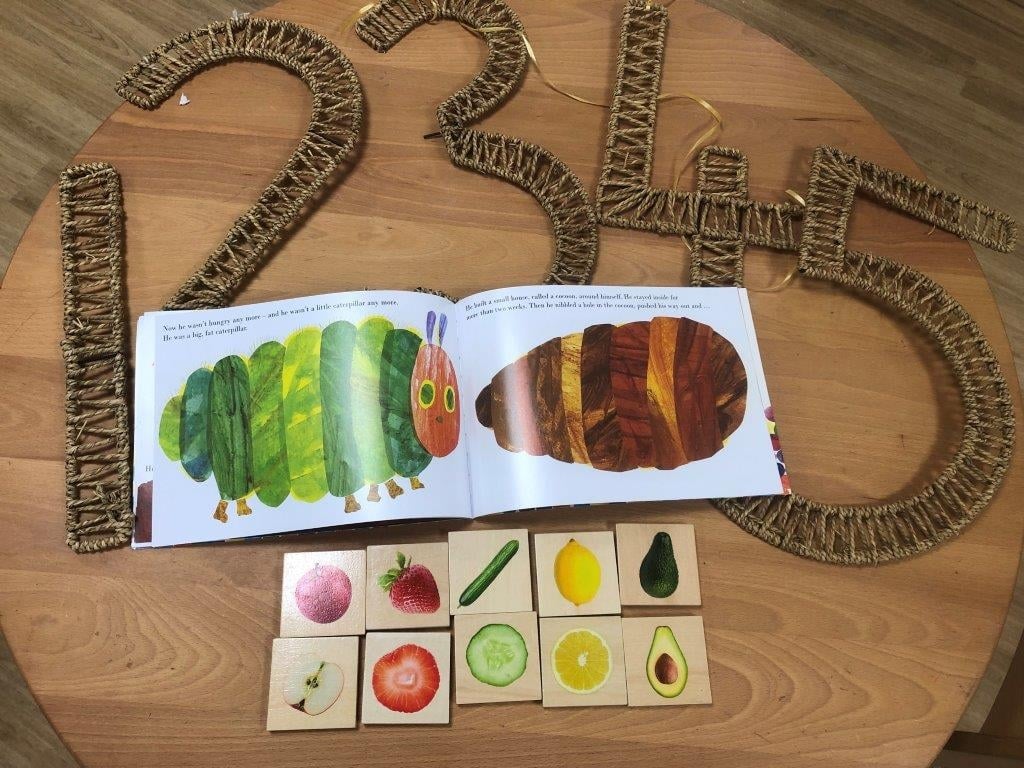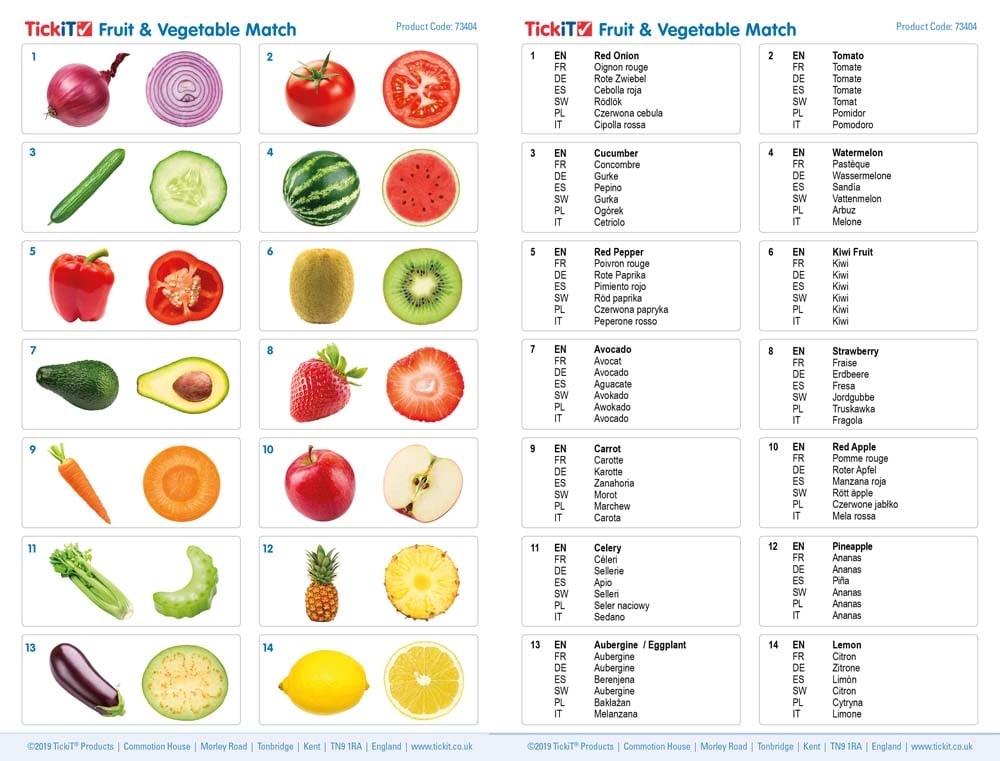Our Fruit and Vegetable Match set is new for 2019.
14 pairs of smooth beech plywood square tiles, each with a detailed and colourful photographic image of real fruit and vegetables.
Includes colour identification guide in 7 languages. Find out more here.
Sophie Lucas, Nursery Manager at Nuffy Bears in Tunbridge Wells, has been making use of the Fruit and Vegetable Match set in her setting.
We contacted her to find out what she thinks of the set and how she has been using it.
How durable did you find the Fruit and Match set?
The Fruit and Vegetable Match blocks are extremely durable. The children were attracted to the colourful images straight away and enjoyed handling them. They are a great size for little hands. Most snap games are made from cards which young children often struggle to pick up from tables, these chunky blocks ensure that children of differing abilities and ages can engage well with the game.
Do you feel the product would have continued value over time?
Yes. They can be extended in a variety of ways. We have used them as a simple matching game, to use as props for singing and rhyming, and alongside one of our favourite stories – Supertato!

How do you feel the Fruit and Vegetable Match set can be used support a child's learning, development and enjoyment in relation to the EYFS / National Curriculum?
The product can be used in a variety of ways to support different aspects of the EYFS for example;
Small group matching game – by working together in small groups and learning to take turns children are developing their personal and social skills. Turn taking is an important skill needed to be able to engage in conversation, it teaches children the back-and-forth exchange between people.
Through discussions about the different fruits and vegetables, children are developing their understanding about the world around them, different cultures, people within their environment. They learn from each other about how our home lives differ – Which fruits and vegetables do we eat at home? Which do we like? Which don’t we like? Where do these fruits and vegetables come from? These discussions also support children to learn more about healthy living and why it is so important to include fruits and vegetables in our diet. By matching the items together, we are teaching children to categorise and sort which is a fundamental skill needed for children to develop their mathematical understanding.
Story/singing props – children learn to use practical items in stories and songs which help them to make connections and develop their understanding, for example learning names of the fruits and vegetables, learning that they look different inside to outside etc. Children need to understand what a word is, what is means and how it can be used to begin to use these words in their regular vocabulary. It also supports children to begin to use props in their own story telling which helps develop their imaginative play and literacy skills.

How versatile is the Fruit and Vegetable Match set?
It is extremely important for children to explore and learn about food, and it is great to be able to support children to do this in an economical way. In our current climate, with a lot of families having to use food banks, I feel it is extremely wasteful to encourage children to play with real food.


Children learn through play; therefore, it is imperative that they are given opportunities to explore and learn about food freely. The fruit and vegetable blocks provide children with opportunity to do this without causing unnecessary waste.
Over the past few weeks we have used the Fruit and Vegetable Match in a variety of ways such as props for our favourite stories, creating Supertato and Hungry Caterpillar story scenes for children to play with and explore. We have used them to play matching games and learn about how food can look different on the inside. We have encouraged children to sort the foods into colours and shapes, vegetables and fruits. We have also used them in our art area to encourage children to look at the different colours and see if they can create similar colours through mixing. Our younger children have enjoyed having the blocks in their home corner to support their imaginative play skills.
